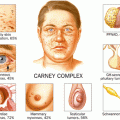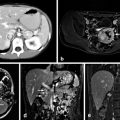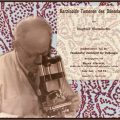Henry Plummer, photographed at age 26, soon after graduating with his medical degree from Northwestern University and just before being recruited by the Mayo doctors. (By Permission of the Mayo Historical Unit, Mayo Clinic, Rochester, Minnesota)
Henry S. Plummer has been described by a colleague with an intimate knowledge of his life as being both an “eccentric” and a “genius” [1, 2]. Helen Clapesattle, a former director of the University of Minnesota Press, was commissioned to write the history of the Mayo family from the 1850s to 1939, and through her interviews with Drs. Charles and William Mayo, as well as friends and colleagues at the Mayo Clinic , she was able to compile examples of both the brilliance and the mannerisms of Dr. Plummer [2]. Subsequently, Dr. F. A. Willius, a cardiologist at Mayo Clinic and longtime friend and colleague, wrote a detailed and insightful description of Dr. Plummer from his childhood until his final days and described therein not only his remarkable and diverse professional accomplishments but also several anecdotes about his personal characteristics and his private life [1].
Born on March 3, 1874, to Isabelle Steer Plummer, a schoolteacher, and Dr. Albert Plummer, a country doctor in southern Minnesota, Henry Plummer was drawn to medicine at an early age. It is said that as a toddler he loved looking at the illustrations in his father’s copy of Gray’s Anatomy and as a child accompanied his father on house calls, traveling by horse and buggy [1]. He attended his local high school, then the University of Minnesota for 2 years, and subsequently received his M.D. diploma from the Medical School of Northwestern University of Chicago in 1898 [1]. Henry joined his father as a general practitioner for 3 years, and in 1900 a chance occurrence changed the futures of both Dr. Plummer and the Mayo Clinic. On that day, Dr. William Mayo traveled to Racine, Minnesota, to accompany Dr. Albert Plummer on a house call. Not feeling well, the senior Dr. Plummer sent his son, Henry, with Dr. Mayo. Henry had a long-standing interest in engineering and had developed an interest in laboratory procedures. He brought with him a microscope, discussed its usefulness with Dr. Mayo, and demonstrated its value in examining a blood sample during their visit with the patient who had leukemia [1]. Upon his return to Rochester, Dr. Will Mayo said to his brother, “that son of Dr. Plummer’s is an extraordinary young man. I believe we ought to get him up here to take charge of our laboratories; he would do us a lot of good” [2].
Henry thus moved to Rochester as one of the early members of the Mayo brothers’ practice. His younger brother, William Albert, also later became a Mayo Clinic physician. On October 4, 1904, Henry married Daisy Berkman, a niece of the Mayo brothers. Henry and Daisy adopted two children, Robert and Gertrude (Fig. 1). His career can be divided into three areas of interest. The most far-reaching was his vision for the practice of medicine. He saw the value of an integrated practice and the need for specialization. With this in mind, he was entrusted by the Mayo brothers to oversee the design and construction of not one, but two clinic buildings (the latter, completed in 1928, is now named the Plummer building). He designed exam rooms, lighting, and communication systems that streamlined the flow of patients. He recognized that the system of patient records, where entries were placed in ledgers and kept in individual physician’s offices, was inefficient. He, therefore, developed a single medical record that contained all of a patient’s records, each catalogued by type—history, laboratory, operative note, etc. The records were then maintained centrally but transported as needed via a pneumatic tube system. The records were designed to facilitate review for research on, and future publication of, patient outcomes. In essence, he created an early version of today’s electronic medical record. Dr. Plummer was also placed in charge of modernizing the laboratories, introducing x-ray machines to the clinic, as well as electrocardiograms (ECGs) and measurements of O2 requirements [1].


Fig. 1
Henry Plummer, photographed with his wife and two adopted children. (By Permission of the Mayo Historical Unit, Mayo Clinic, Rochester, Minnesota)
A second area of Dr. Plummer’s professional interests pertained to esophageal diseases, including foreign bodies, strictures, and cardiospasm [3]. During the period of his clinical practice, accidental lye ingestion was a common occurrence with devastating consequences. Henry became adept in bronchoscopy and esophagoscopy, and with his background interest in mechanics and engineering he created equipment such as dilators in his home workshop to assist in esophageal instrumentation. He established and published on his specialty referral practice in esophageal disorders; he is remembered for describing the “Plummer–Vinson” syndrome [3].
Clinically, however, Henry Plummer is best known for his many contributions to the field of thyroidology. His interest in the thyroid began as a teenager when he observed one of his father’s patients with a goiter that progressively enlarged, causing respiratory symptoms and eventually being resected by Dr. William Mayo. He apparently continued his interest in patients with goiter as a medical student, and it was therefore not unexpected that he should pursue thyroid disease as an area of clinical focus when he joined the Mayo brothers [1]. Goiters were very common at the beginning of the twentieth century. Iodine deficiency was common, particularly in the Midwest, and these goiters when they became greatly enlarged required surgical resection. Surgery, however, was associated with a significant mortality rate, and so patients traveled to centers with expertise in thyroidectomy. Dr. Charles Mayo had such an interest and became known as “the American father of thyroid surgery,” performing and reporting results on thousands of such operations.
Some of the larger goiters seen by the Mayo doctors presented with thyrotoxicosis and, not surprisingly, Dr. Plummer found himself leading a multispecialty team with expertise in the diagnosis and management of hyperthyroidism . Their chosen pathologist, Dr. Louis B. Wilson, reviewed Dr. Charles Mayo’s surgical cases of hyperthyroidism due to exophthalmic goiter (Graves’ disease) from 1898 to 1908 and divided them into pathological groups [4]. He then had Dr. Plummer review his clinical notes and separate patients into four groups: (a) acute hyperthyroidism (mild, moderate, severe, very severe); (b) prior severe, but examined when in remission; (c) prior severe, but current symptoms related to end-organ (e.g., cardiac) symptoms; and (d) mild, chronic hyperthyroidism. The results showed “an almost complete parallel was found to exist between the pathological conjectures and the clinical facts in about 80 % of the cases” [4]. The same Dr. Wilson later became much better known for his development of the frozen section technique to assist surgeons.
Stay updated, free articles. Join our Telegram channel

Full access? Get Clinical Tree








